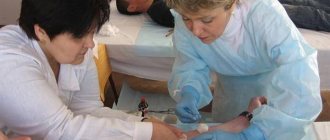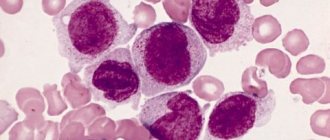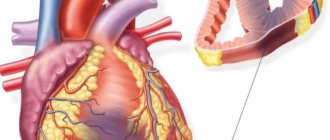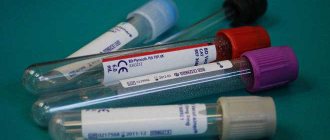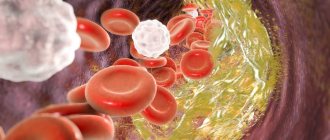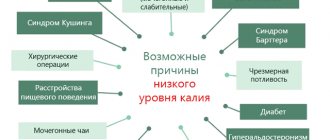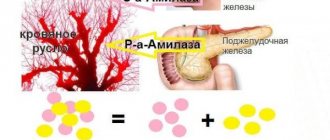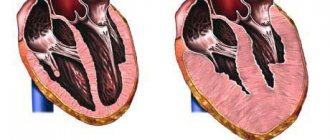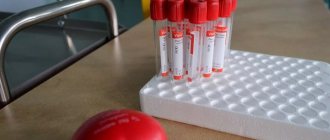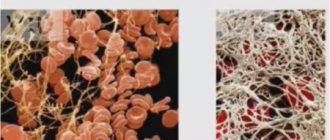How does hidden anemia develop?
Hidden anemia is also called iron deficiency. Pathology develops with normal hemoglobin levels, but against the background of a significant decrease in ferritin in the body.
Iron is not synthesized in the body, but comes with food. Passing through the digestive tract, it is absorbed in the small intestine and combines with transferrin and is distributed throughout the tissues.
More than 70% of iron is contained in red blood cells, the rest is deposited in other tissues. This is usually the bone marrow, spleen and liver. If the iron content in food is insufficient, the body begins to consume it from the depot - ferritin.
In this case, the hemoglobin level may remain normal for years, and clinical manifestations of the pathology will be absent.
Physico-chemical structure
In the bloodstream there are red blood cells - one of the types of formed elements. They are responsible for transporting oxygen to organs and tissues. Unlike other cells, red blood cells do not have a nucleus. Most of the cell is occupied by hemoglobin molecules, the level of concentration of which in the blood is directly proportional to the number of red blood cells.
On a note! The structure of hemoglobin is represented by 4 protein chains called globins and 2 structures containing Fe. The latter are called gems. The combination of two elements gave the name hemoglobin protein.
The balance of Fe in the composition of red blood cells is important. If it is less than normal, then the blood does not carry a sufficient amount of oxygen. Excessive levels of concentration make the blood too thick. Each Fe atom in a hemoglobin molecule captures an O² molecule. On the way back, they take the accumulated carbon dioxide and remove it from the body.
Reasons for decreased iron concentration
Every day, about 1 g of iron is excreted from the body along with feces, urine and sweat. To make up for its losses, you need to eat well. But if the body loses more iron than it receives from food, iron deficiency anemia develops.
Iron deficiency also occurs in pathological conditions caused by the physiological characteristics of the body and external influences. The main provoking factor for anemia is regular blood loss.
This includes
- menorrhagia,
- erosive damage to the gastrointestinal tract,
- hemorrhoids and
- anal fissures accompanied by bleeding.
Separately note blood pathologies leading to bleeding -
- hemophilia,
- hemorrhagic diathesis,
- von Willebrand's disease.
Preceded by hidden anemia
- heavy blood loss caused by injuries and surgical interventions,
- regular blood donation by donors,
- undergoing hemodialysis for chronic renal failure.
Other causes of iron deficiency:
- Factors affecting the absorption and transport of iron are malabsorption syndrome, intestinal infections, chronic enteritis, hepatitis, cirrhosis of the liver, resection of the stomach or part of the intestine.
- Insufficient intake of iron into the body - vegetarianism, a diet excluding meat products, poor nutrition, anorexia.
- Chronic pathologies - chronic infectious and inflammatory diseases, erosive damage to the gastrointestinal mucosa, malignant tumors lead to significant consumption of microelements.
- Increased consumption of iron - the individual need for a microelement is significantly higher than normal in premature infants, adolescents, pregnant and breastfeeding women.
It is believed that there may be a genetic predisposition to anemia - if the mother has iron deficiency, then there is a high probability that her children will suffer from this problem.
Stages of iron deficiency anemia
Iron deficiency is acutely felt only in cases of massive blood loss; in other cases, the development of iron deficiency lasts for many years.
It is customary to distinguish three stages of pathology:
- Prelatent - the amount of iron in reserves decreases, but there is still enough of it for the production of red blood cells. Hemoglobin levels remain normal.
- Latent (preanemia) - reserves are completely depleted, a lack of transport iron occurs, and the activity of all transport iron-containing enzymes decreases. The hemoglobin concentration does not change or decreases slightly. Therefore, latent iron deficiency according to ICD 10 is considered not as a disease, but as a functional disorder.
- Manifest - characterized by a decrease in hemoglobin levels and a complete absence of ferritin in the body.
But, according to WHO, in almost 13% of patients within 3 years from the onset of the disease, ferritin levels spontaneously recover. In 60% of patients, a 10-year latent period is observed, and in 27%, the last stage develops rapidly against the background of infectious diseases, after surgery or childbirth.
Normal hemoglobin in the blood: table by age
Many people have heard about the connection between iron and hemoglobin. It is a structural element of this protein. There is even a misconception that a lack of hemoglobin in the blood is necessarily associated with iron deficiency. This is not true. There can be a lot of reasons. Hemoglobin may be low despite normal iron levels. The opposite case is also possible - low iron in the blood with normal hemoglobin. There are explanations for this.
How does anemia manifest with normal hemoglobin?
Iron deficiency anemia does not manifest itself for years, and only a number of signs can suggest the development of pathology.
It is customary to identify a number of common symptoms that indicate iron deficiency in the body:
- Decreased performance, constant fatigue.
- Low concentration, memory impairment.
- Dizziness, lightheadedness.
- Frequent headaches.
- Feeling of tightness in the epigastrium.
- Sleep disturbance, constant lack of sleep.
- Digestive disorders.
- Poor circulation leading to chills.
- Shortness of breath, tachycardia.
Taking care of your own health
Prevention is effective medicine. The therapist will help develop a diet, taking into account the patient’s age, gender and general health. The menu is dominated by fresh herbs, vegetables, and fruits. The doctor will advise you to eat animal protein to raise your hemoglobin level. Other recommendations:
- normalize the drinking regime;
- a person requires regular, professionally selected physical activity;
- giving up alcohol and tobacco;
- refusal of fatty, spicy, fried foods;
- eat more seafood containing folic acid - the substance is responsible for the rate of Fe processing in the body;
- eat foods containing B12.
Every six months they take the UAC test. The sooner a decrease in vital signs is recorded, the faster the situation can be corrected.
The relationship between hemoglobin and Fe in the human body is realized at two levels. First, iron is part of hemoglobin molecules. Each cell responsible for transporting oxygen to organs and tissues is built from it. The second level is indirect. The level of Fe concentration may have no effect on the protein at all. The latter often changes under the influence of an incorrect diet and lack of physical activity.
Diagnosis of hidden anemia
Hidden anemia can be suspected by pale skin, constant weakness, frequent dizziness and icy extremities. These signs accompany other diseases, so it is important to get diagnosed in a timely manner.
To confirm iron deficiency anemia, laboratory tests are performed:
- A complete blood test to count the number of red blood cells and determine the level of hemoglobin.
- A biochemical blood test includes: detection of the level of ferritin, transferrin, serum iron, iron-binding capacity of blood serum, concentration of folic acid and vitamin B-12, liver tests.
- Examination of feces for occult blood.
Instrumental diagnostic methods are aimed at identifying hidden bleeding and diseases that can affect the concentration of iron in the blood.
Required studies include:
- X-ray of the lungs;
- firogastroduodenoscopy;
- colonoscopy;
- ultrasonography;
- computed tomogram.
A set of diagnostic measures is prescribed by the doctor after collecting an anamnesis and assessing the general well-being of the patient.
If it is not possible to immediately make a diagnosis, a bone marrow puncture is prescribed to count the number of bone marrow elements and determine the maturation index of neutrophils and erythroblasts. This method allows you to differentiate iron deficiency from other types of anemia.
General blood analysis
The content of red blood cells is checked by a general blood test. This is especially important in cases where a person’s deterioration in well-being may suggest a deficiency or excess of red cells.
Signs of low and high hemoglobin
The symptoms of high and low red blood cell counts are, for the most part, the same. May be observed:
- Weakness, shortness of breath, chronic fatigue;
- Sudden movements are accompanied by dizziness;
- Drowsiness;
- Pale skin. With high hemoglobin, on the contrary, redness is possible.
- With anemia, the tongue in the mouth may become bright red.
- Poor appetite;
- Hypotension with low hemoglobin. If it is high, there is a tendency towards hypertension.
- Anemia may cause a tendency to faint.
How to increase iron concentration
Therapy for latent anemia consists of eliminating provoking factors, adjusting the diet, and replenishing iron reserves in the depot. The treatment regimen is selected by a hematologist, together with other specialized specialists - proctologist, gastroenterologist, gynecologist and others, depending on the cause of the development of the pathology.
All patients are advised to have a nutritious diet, which consists of consuming a sufficient amount of meat - offal, beef, veal, lamb.
It should be borne in mind that the digestibility of ferritin increases with sufficient consumption of ascorbic, citric and succinic acid. And its absorption is reduced by coffee, tea, dairy products and chocolate, so you need to wait several hours between them and consuming iron-containing products.
But when iron resources in the body are completely depleted, rational nutrition is not able to bring its concentration back to normal. Long-term treatment with iron-containing drugs is required.
